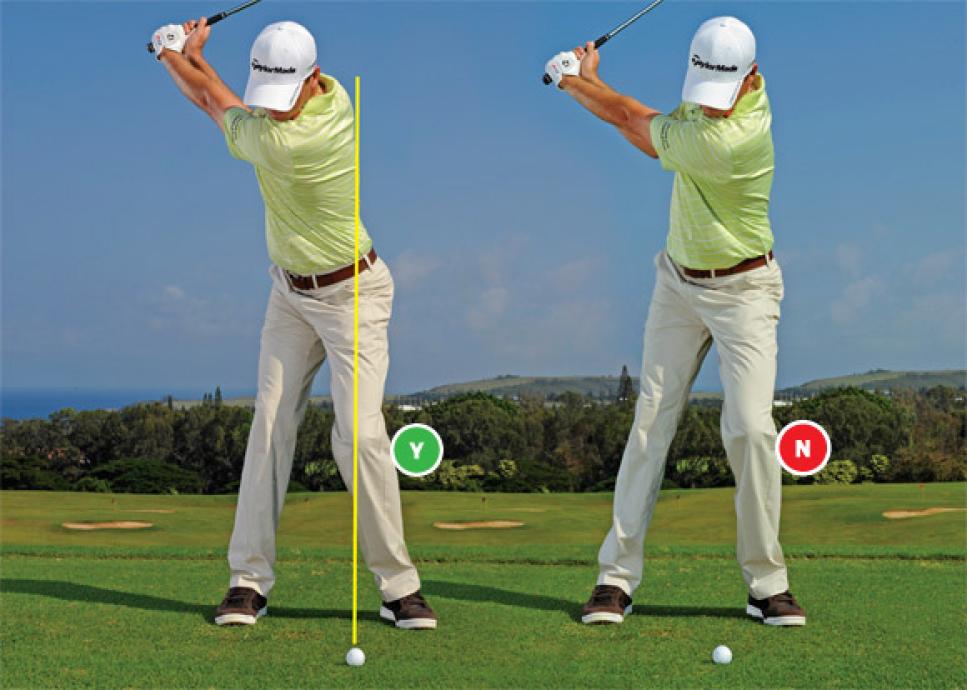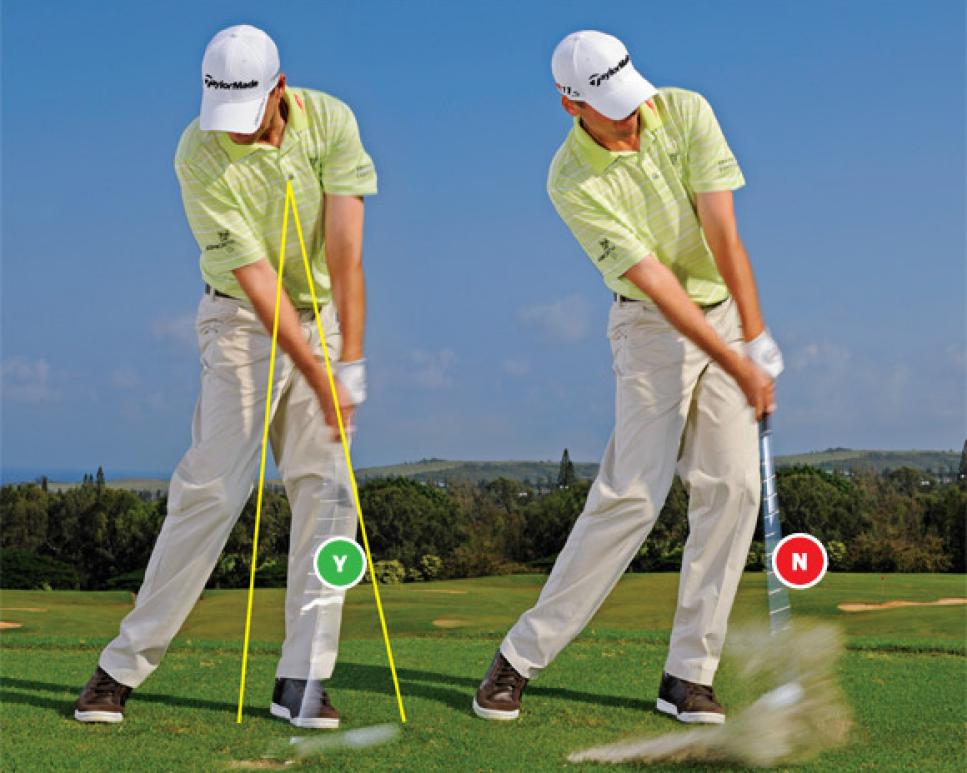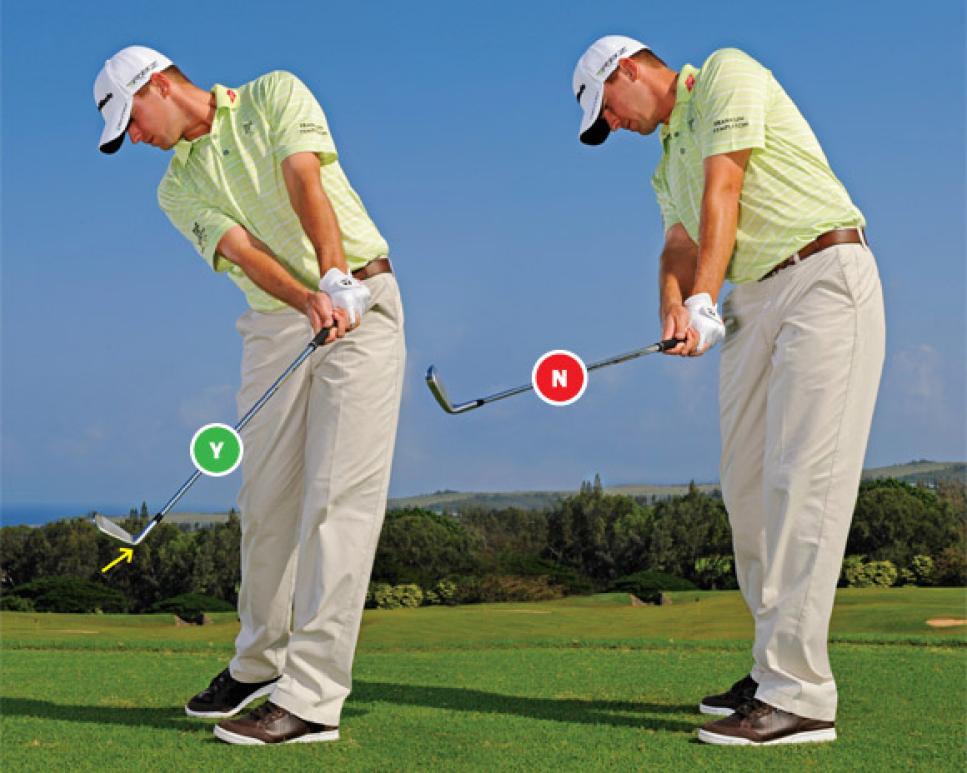Instruction
4 Fast Fixes

I was playing bad. My coach, Steve Dahlby, was blunt: There were four faults going on in my swing, and fixing them might take a lot of range balls and some high scores along the way. The swing I was making wasn't that far from the typical high-handicapper's weak, over-the-top move that usually produces big slices--in my case, it was low hooks. On the bright side, Steve said, these common faults are connected like links in a chain, so fixing one should help fix the others. Luckily, that was the case for me, and I made real progress within a month. Try the drills I used to ingrain the correct moves into my swing. Maybe you'll have your best season ever—that's my goal.

1. IN THE TAKEAWAY: DON'T SUCK IT INSIDE
The hands shouldn't start the takeaway. All those little bones and muscles don't offer a reliable way of starting a golf swing. Much better to let the bigger muscles in your shoulders sound the command. When I start with my hands, my tendency is to pull the club to the inside so that it gets stuck behind my body (above, right). From there, it's almost impossible to get my hands and body matched up again. To make a proper takeaway, I just think, railroad tracks. My hands are over the inside rail, and the toe of the club is on the outside rail (above, left). If I can start back tracking over those rails, with the clubhead staying outside my hands, I'm off to a good start.
INGRAIN IT!
Picture those railroad tracks as you rehearse the first two feet of your takeaway over and over. Try to take the club back as slowly and smoothly as you can. Your hands shouldn't rise higher than mid-thigh. Sometimes I'll stand on the range and not take the clubhead back any farther than two feet for 20 minutes.

2. AT THE TOP: DON'T TIP FORWARD
Because of the fault in my takeaway, I was tipping toward the target at the top of my backswing (above, right). With my body leaning over my left foot, there was nowhere for my weight to shift on the downswing except away from the target. So I would hang back and throw my hands from the inside, which produced a lot of hooks. Many amateurs fall back, too, but they throw their hands away from them starting down, which leads to slices. Either way, the solution is to turn behind the ball (above, left). After my takeaway--those first two feet on the railroad tracks--it's all about body turn. That puts me in position to swing down to the ball with power.
INGRAIN IT!
Swing the club back, count to five, and then hit the ball. Swinging down from a paused position teaches what a good transition feels like, with all your weight moving toward the target. Plus, it feels uncomfortable to pause at the top if your weight is on your front foot, so you'll learn to load into your right side.

3. AT THE BALL: DON'T FALL BACK
Falling away from the target on the downswing used to make my chest spin open too soon and point out in front of the ball at impact (above, right). This wasted power and made squaring the clubface a sequence of small miracles. The correct feel at impact is: chest on top of the ball. If there were a flashlight attached to my sternum, I'd want it to shine directly down on the ball. I call this "covering the ball," and to achieve it, my spine must appear perfectly straight from this face-on view (above, left). If you suffer from both fat and thin strikes with your iron shots, your swing is bottoming out behind the ball. I'll bet you need to eliminate this fall-back move from your swing.
INGRAIN IT!
The best way to get a feel for covering the ball is to hit low punch shots with a middle iron. Don't think about making a shoulder turn; just keep your chest looking down at the ball as you hit smooth, arms-only punch shots. Then go back to normal swings, focusing on getting your chest over the ball at impact.

4. AFTER IMPACT: DON'T THROW IT
This fault is more common among better players. If you're like me and play your best golf when you're hitting a cut shot, keep reading. As I mentioned earlier, I was struggling with the hook because I was hanging back on my right side and flipping my hands over through impact (above, right). To fix this, a swing thought that worked for me was to keep the heel of the club moving low and left through the shot. This means that after I strike the ball, I want to feel like the heel is skimming along the turf and then tracking left of my target (above, left). The feeling of holding the clubface open longer helps prevent the toe from snapping shut and reduces the chances of hitting the big hook.
INGRAIN IT!
Take a pitching wedge and practice hitting little cut shots. Don't worry about where the ball goes; your only goal is for the heel of the club to beat the toe through impact as the clubhead swings left. I'll begin a session with 30- or 40-yard pitches, then work my way up to full swings with the same cut-shot feel.
Sean O'Hair has won four times on the PGA Tour. Now 30, he turned pro at 17. He ranked 21st in greens in regulation in 2013.